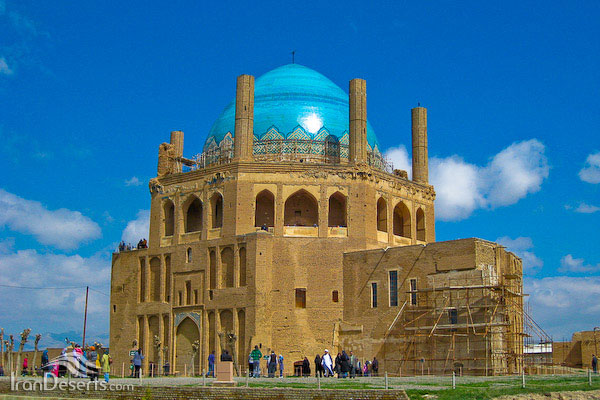 جاذبه : Soltaniyeh Dome
جاذبه : Soltaniyeh Dome
مشخصات جاذبه
جاذبه::Soltaniyeh Dome
نام کشور::Iran
نام شهر::Tehran
نوع جاذبه ::Ancient and Historical
نوع جاذبه فرعی:: Historical
آدرس:: 36 kilometers east of Zanjan, Soltaniyeh, Zanjan province, Iran
زمان بازدید:: 08:00:00
تعطیلی هفته:: ندارد
تعطیلی سالیانه:: روزهای تاسوعا و عاشورای حسینی، ۲۱ رمضان شهادت امام علی، ۲۸ صفر رحلت پیامبر، ۱۴ خرداد رحلت امام خمینی، ۲۵ شوال شهادت امام جعفر صادق
بلیط:: 50.000
بلیط خارجی:: 500.000
توضیحات:: Soltaniyeh is one of the cities of Zanjan Province, located 43 kilometers from Zanjan City. Dome of Soltaniyeh and Öljaitü Tomb are in this city. Molla Hassan Kashi tomb and khanqah of حسام الدن حسن چلبیare other historical monuments of this city. Dome of Soltaniyeh is the tomb of Öljaitü which was constructed from 1302 to 1312 AD in Soltaniyeh City (Ilkhanid capital) and it is considered as an important Iranian Islamic architecture and Azeri style architecture. Dome of Soltaniyeh is one of the most important examples of Ilkhanid architecture that has had a great effect in historical monuments architecture in the world; we can see this influence in the architecture of Cathedral of Saint Mary of the Flowers in Florence. After Dome of Cathedral of Saint Mary of the Flowers in Italy and Dome of Hagia Sophia in Turkey, Dome of Soltaniyeh is the third largest dome in the world. The dome registered in Iran's National Heritage in 1931. It was also registered in the list of UNESCO world Heritage as the seventh Iranian classic in Tir 24th, 2005. History and Patronage The Mongol invasion of the Islamic world began with the conquest of eastern Iran in 1221, and ultimately ended the period of Abbasid rule (750-1258). The Mongols conquered most of West Asia, and a branch of the dynasty known as the Ilkhanids (1256-1353) “centered its power in northwest Iran.” While this conquest initially came as a devastation, the Ilkhanid period also saw major developments in the decorative arts. By the architectural masterpiece that is the Dome of Soltaniyeh, also known as the Tomb of Oljeitu, the Ilkhanids proved to be capable as builders. The Mongol presence in Iran led to a shift away from traditional cities to ones with an emphasis on pasture. An example of this new type of Mongol city was the city of Sultaniyya in northwestern Iran. Arghun, the Ilkhanid ruler of Iran at the time, established the Sultaniyya as his summer capital. His son, Muhammad Oljeitu Khudabanda, furthered the city’s development and transformed it into the capital of the empire. After Oljeitu’s death, the city began a steady decline, and from a once flourishing city it now only has two buildings which show signs of its former wealth and importance, an octagonal tomb and an adjacent khanaqah. A khanaqah is a building designed specifically for Sufi gatherings as a spiritual retreat. The strong quality of the preserved tomb attests to the richness of its patronage. The large domed tomb chamber of Oljeitu was meant to rival the colossal tomb built by the Seljuq sultan Sanjar at Merv. The tomb of Oljeitu has an octagonal plan, like the Tomb of Ahmed Sanjar (1157), and the idea of the octagonal plan may have came from the Dome of the Rock at Jerusalem, being used as “a symbolical representation of the building having a religious significance.” The tomb complexes were sponsored by the Ilkhanid court and were the “largest and finest of their time”.
کلیات
جاذبه::Soltaniyeh Dome
وجه تسمیه::Soltaniyeh means royal hunting ground
سازنده ::Sultan Muhammad Khodabandeh
سبک معماری:: Azerbaijani style
بازسازی:: After somany years, finally the repair of the tileworks has ended on the November of 2008.
ویژگی خاص:: It's the third tallest dome after the Santa Maria church in Italy and Ayasofya mosque in Turkey.
امکانات
WC
پیشنهادات
جاذبه::Soltaniyeh Dome
مدت زمان بازدید::01:00
آثار و نمونه های مشابه:: Similar buildings in Italy and Turkey.
بخش های مهم برای بازدید:: Upper levls, the crypt (the tomb of Sultan Muhammad Khodabandeh)
پیشنهاد ویژه:: Also visit the Dashkasan Temple known as the China of Iran while in Soltaniyeh.
مسیر دسترسی
جاذبه::Soltaniyeh Dome
آدرس::36 kilometers east of Zanjan, Soltaniyeh, Zanjan province, Iran
تلفن:: 02435823105
عکس

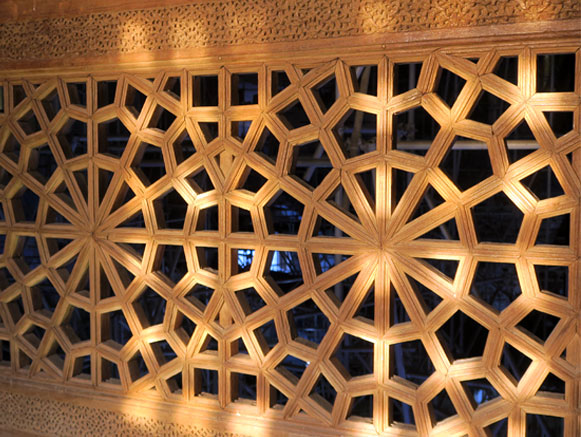
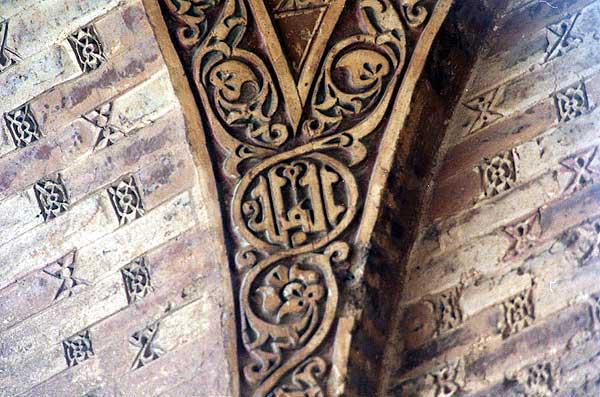
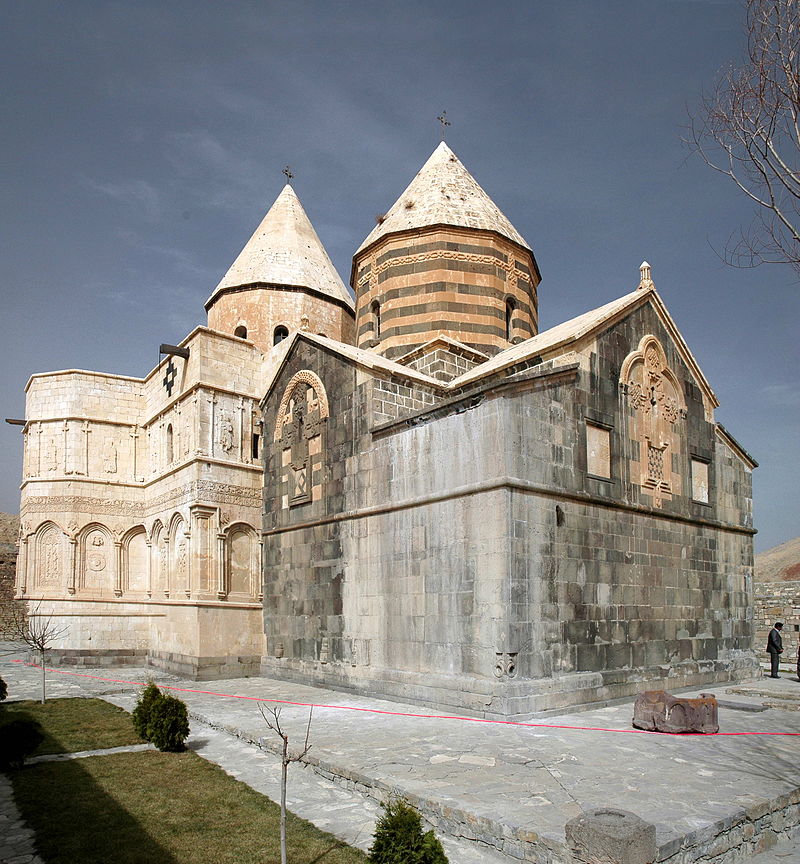 جاذبه : Qara Kilisa
جاذبه : Qara Kilisa
مشخصات جاذبه
جاذبه::Qara Kilisa
نام کشور::Iran
نام شهر::West Azerbaijan
نوع جاذبه ::Ancient and Historical
نوع جاذبه فرعی:: Historical
آدرس:: Qara Kilisa village, 15 kilometers northeast of Chaldoran, West Azerbaijan, Iran
زمان بازدید:: 09:00:00
تعطیلی هفته:: ندارد
بلیط:: ۵۰.۰۰۰
بلیط خارجی:: ۵۰۰.۰۰۰
توضیحات:: Qara Kilisa Also known as St. Thaddeus Monastery, Kara Kilise has been registered in UNESCO World Heritage as the ninth monument of the country. It is one of the most beautiful historical monuments of West Azerbaijan Province which attracts very tourist with its unique and special architecture. Kara Kilise is among Armenian religious monuments in Iran which has been demolished and reconstructed in different periods. A huge part of the monastery was torn down at the time of the Mongolian Changis Khan's attack for the first time. However, it was refurbished in Hulagu Khan's reign by Khawaja Nasir al-Din al-Tusi. Every year on June 26, Armenians around the world go to this place to visit St. Thaddeus Monastery. In addition to them, some Christian countries ambassadors who work in Iran as well as foreing toursist accompany Armenians in visitng ceremony of St. Thaddeus Monastery. History and architecture According to the tradition of the Armenian Apostolic Church, Saint Thaddeus, also known as Saint Jude, (not to be confused with Judas Iscariot), evangelized the region of Armenia and Persia.[5] Thaddeus suffered martyrdom in Armenia, according to the same tradition, and is revered as an apostle of the Armenian Church.[6] Legend has it that a church dedicated to him was first built on the present site in AD 68. Little remains of the monastery's original structure, as it was extensively rebuilt after an earthquake damaged it in 1319. Nevertheless, some of the parts surrounding the altar apse date from the 7th century. Much of the present structure dates from 1811, when the Qajar prince Abbas Mirza aided renovations and repairs. Simeon, Father Superior of the monastery, added a large narthex-like western extension to the church. The western extension duplicates the design of Etchmiadzin Cathedral, the mother church of the Armenian Apostolic Church. The 19th century additions were constructed from ashlar sandstone. The earliest sections are of black and white stone, hence its Turkic name Qara Kilse, meaning "the Black Church." In July 2008, the Monastery of Saint Thaddeus was added to UNESCO's World Heritage List, along with two other Armenian monuments in the same province: the Monastery of Saint Stepanos and the Chapel of Dzordzor.
کلیات
جاذبه::Qara Kilisa
وجه تسمیه::Qara means (connotates) Magnificent and Glorious in Azerbaijani Turkish. (It literally means Black in Turkish)
ویژگی خاص:: The combination of black and white stones on the architecture of the church has given it a certain beauty.
امکانات
Parking
WC
پیشنهادات
جاذبه::Qara Kilisa
بهترین زمان بازدید::Spring and Summer
آثار و نمونه های مشابه:: Saint Stepanos Monastery
نزدیک ترین جاذبه گردشگری:: Tombof Sandookht, the daughter of the king of Armenia
مسیر دسترسی
جاذبه::Qara Kilisa
آدرس::Qara Kilisa village, 15 kilometers northeast of Chaldoran, West Azerbaijan, Iran
نحوه دسترسی::By personal vehicle or taxi
عکس

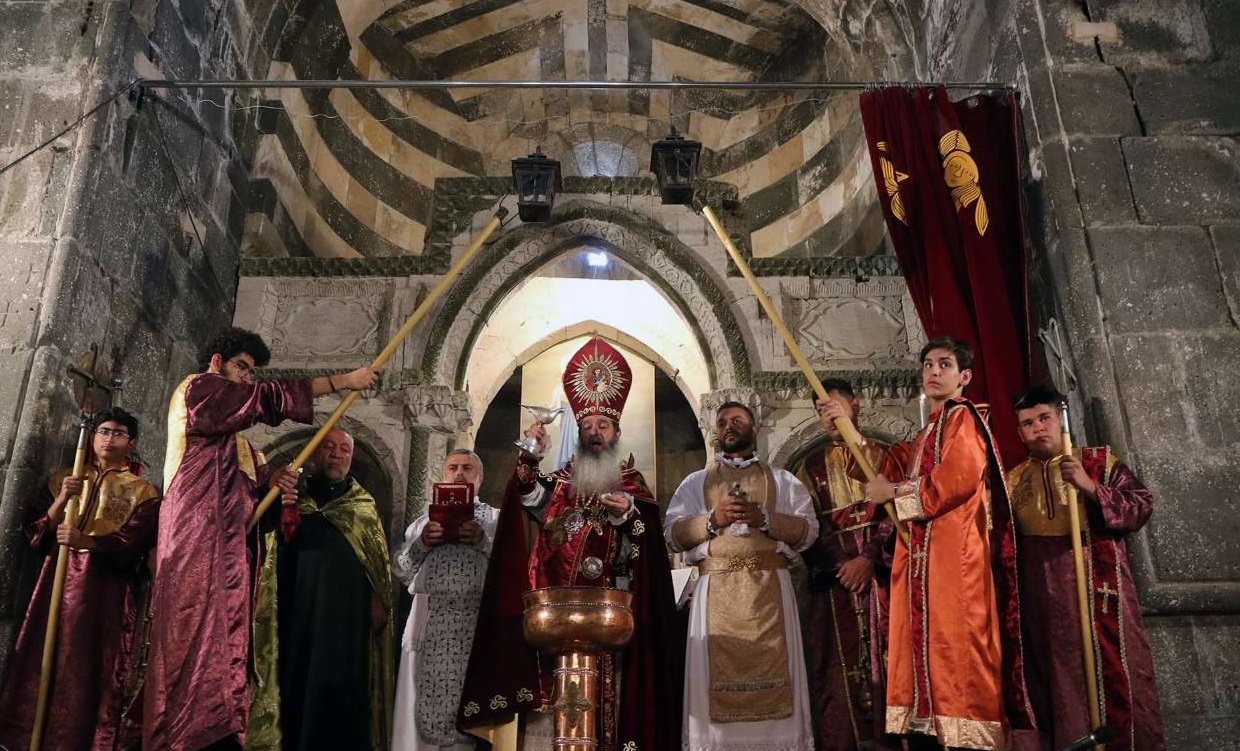
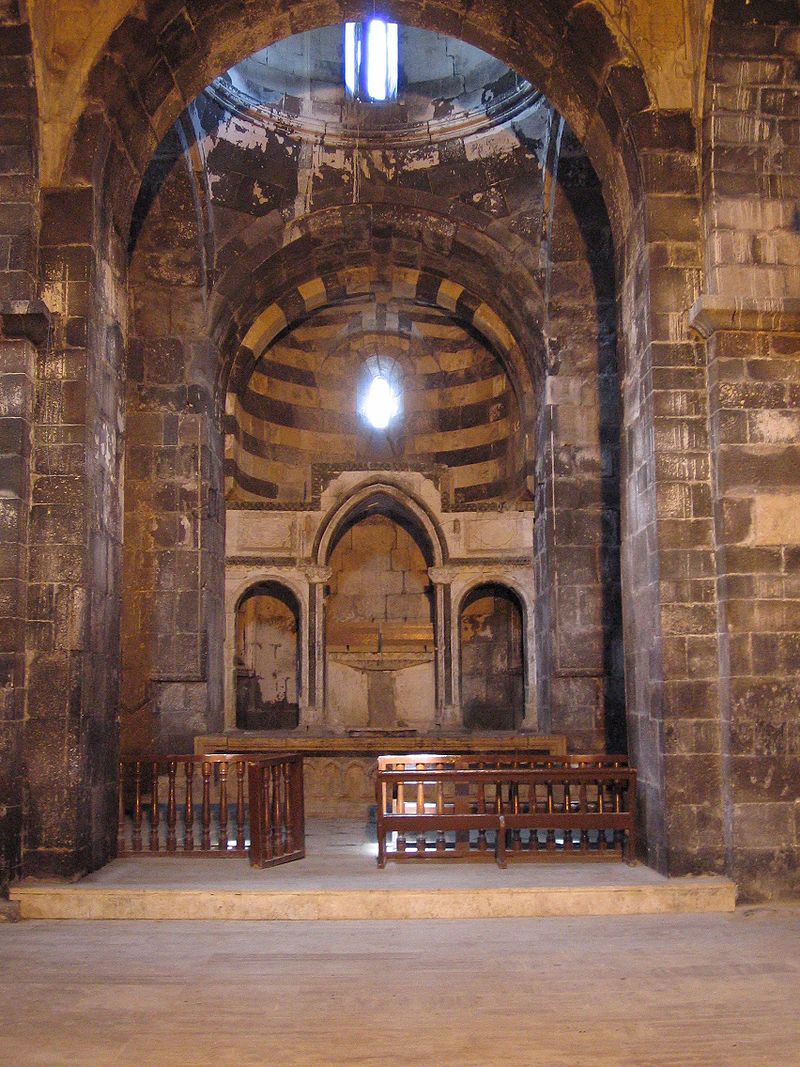
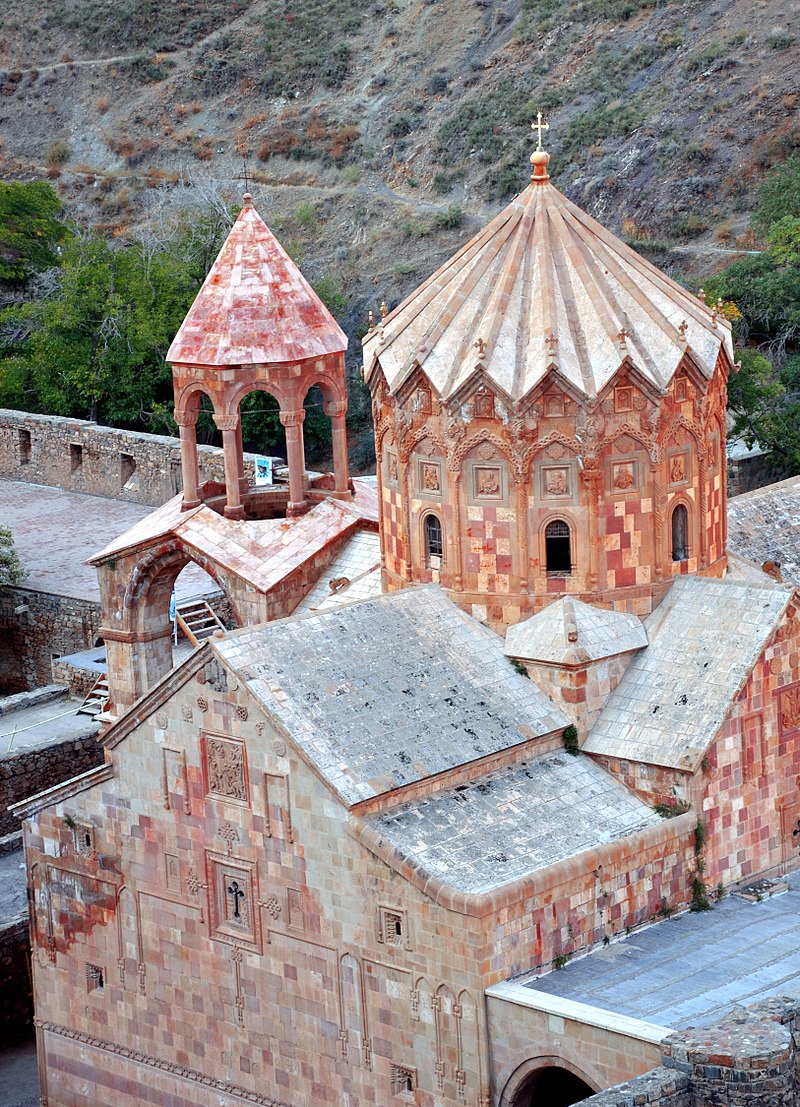 جاذبه : Saint Stepanos Monastery
جاذبه : Saint Stepanos Monastery
مشخصات جاذبه
جاذبه::Saint Stepanos Monastery
نام کشور::Iran
نام شهر::West Azerbaijan
نوع جاذبه ::Ancient and Historical
نوع جاذبه فرعی:: Historical
آدرس:: In a place known as Qariye Gizil Wang near the Darreh Sham village, 3 kilometers from the southern bank of Araz, 16 kilometers west of Julfa, East Azerbaijan, Iran
زمان بازدید:: 09:00:00
تعطیلی هفته:: ندارد
تعطیلی سالیانه:: چهاردهم خرداد٬ بیست و یکم رمضان٬ بیست و پنجم شوال٬ نهم و دهم محرم٬ بیست و هشتم صفر
بلیط:: ۵۰.۰۰۰
بلیط خارجی:: ۵۰۰.۰۰۰
توضیحات:: Saint Stepanos Monastery is the second important Armenian monastery in Iran after St. Thaddeus Monastery. This monument is located in East Azerbaijan Province, 16 kilometers west of Jolfa City and 3 kilometers from southern shore of Aras River in a place named "Qezel Vank" (Red Monastery). The monastery was built in 9th century AD, but it was seriously damaged by earthquake. So, it was refurbished in Safavid period. Also, some measures were taken in Qajar era by Abbas Mirza to maintain and repair it. The whole area of the monastery is located in the heart of mountains and in the middle of the green nature of Jolfa and Azerbaijan Republic borderline. This monastery is respected by all Christians and almost all other religions. However, it actually belongs to Gregory Christians (Followers of Gregory the Illuminator) inhabiting in Armenia. One day in the year, thousands of Armenians gather together in this place to perform their rituals. There are three other monasteries near St. Stepanos Monastery in Darashamb District. St. Stepanos Monastery was registered in Iran's National Heritage on March 6, 1963 under the registration number of 429. It was also registered in UNESCO World Heritage in 2008.
کلیات
جاذبه::Saint Stepanos Monastery
وجه تسمیه::Named after one of the first believers of Jesus Christ.
بازسازی:: The fourth restoration stage of this church was done by Abbas Mirza in year 1826 (1243 solar calendar).
ویژگی خاص:: Saint Stepanos monastery with its many architectural and decorative features, is one of the most beautiful and renown of the Armenian churches in the world.
امکانات
Parking
Buffet
WC
پیشنهادات
جاذبه::Saint Stepanos Monastery
بهترین زمان بازدید::spring and summer
آثار و نمونه های مشابه:: An exact copy of this monastery exists on the northern bank of the Araz river.
بخش های مهم برای بازدید:: Paying attention to the carvings on the stones and walls of the monastery
نزدیک ترین جاذبه گردشگری:: The churches of the valley of Araxes region.
پیشنهاد ویژه:: You could take beautiful photos from the hillsides around the church and the church itself.
مسیر دسترسی
جاذبه::Saint Stepanos Monastery
آدرس::In a place known as Qariye Gizil Wang near the Darreh Sham village, 3 kilometers from the southern bank of Araz, 16 kilometers west of Julfa, East Azerbaijan, Iran
نحوه دسترسی::There is no public transportation available for this location.
عکس

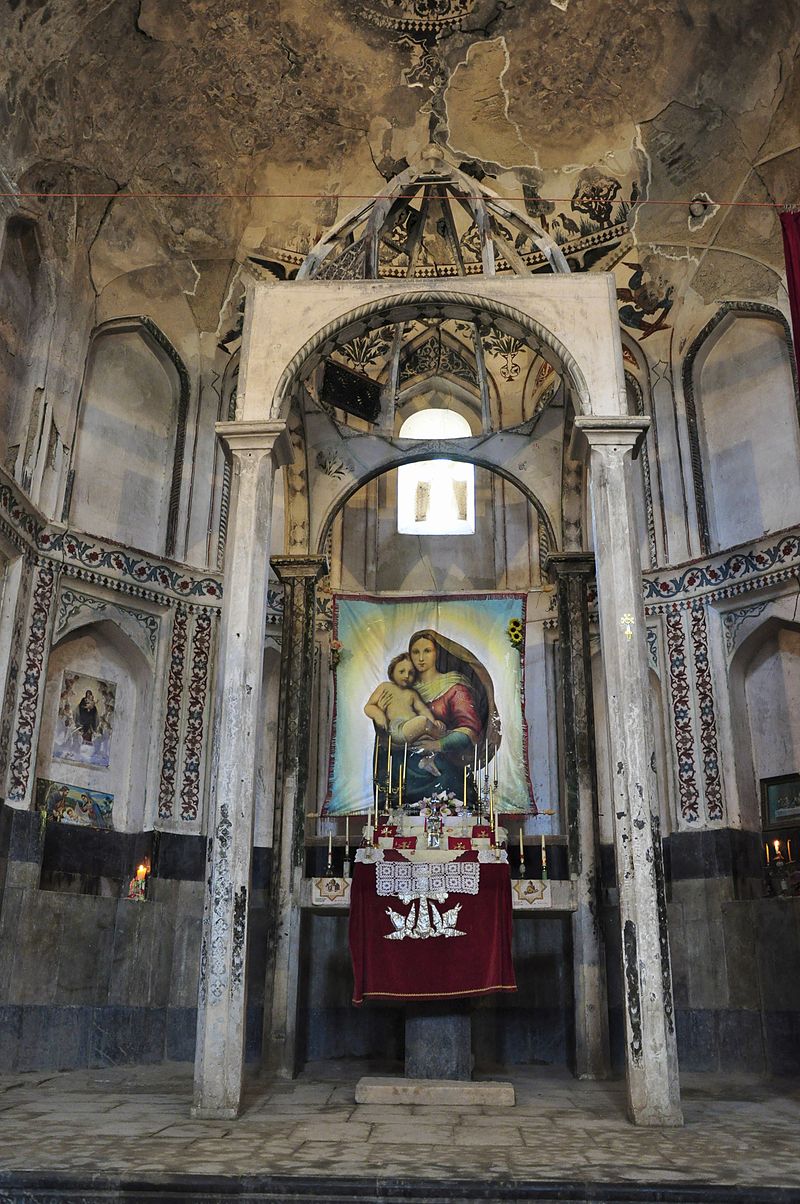
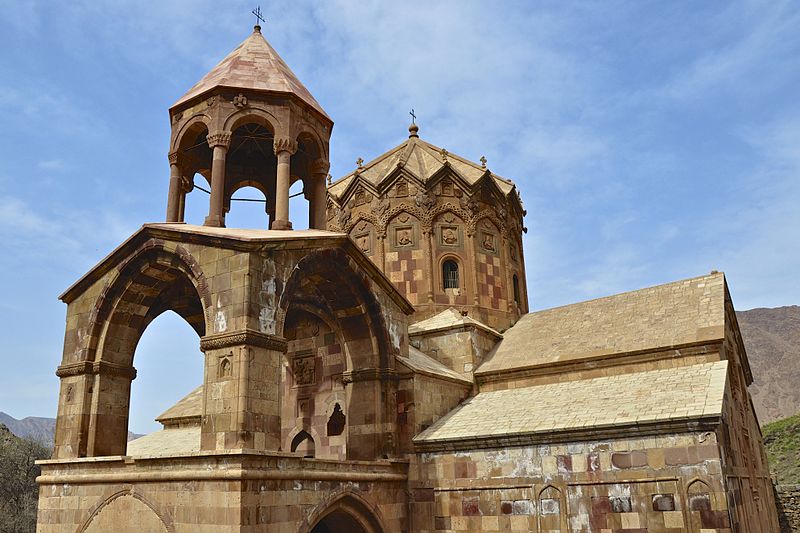
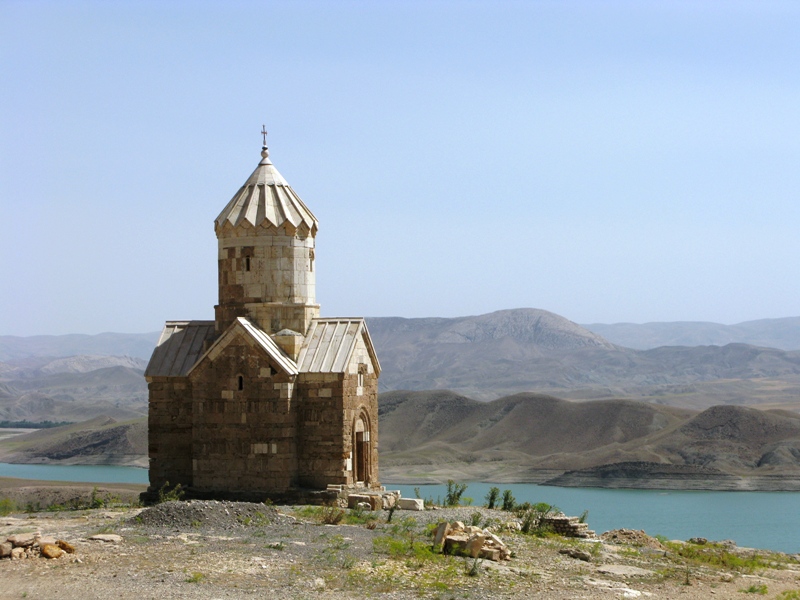 جاذبه : Chapel of Dzordzor, Maku
جاذبه : Chapel of Dzordzor, Maku
مشخصات جاذبه
جاذبه::Chapel of Dzordzor, Maku
نام کشور::Iran
نام شهر::West Azerbaijan
نوع جاذبه ::Ancient and Historical
نوع جاذبه فرعی:: Historical
زمان بازدید:: 00:00:00
توضیحات:: Chapel of Holy Mary which is also called the Chapel of Dzordzor is one of the most visitable historical monuments in Iran. A villag called Baron exists beside Baron Dam, 13 kilometers from Maku. The chapel of Holy Mary was built by Asghaf Besdachi Zakaria from 1315 until 1324. This monument is in the list of UNESCO world monuments. The name of the chapel was “Chapel of Dzordzor” from the beginning and that was for the fact that it exited in a period supervised by Hovhannes Yerz, Dzordzortsy painter. The chapel is cross-shaped and is like a small praying room. This monument is made of carved stones in different sizes. The chapel façade is very simple and it is decorated by only several windows and shutters with engaged columns that end up in a pointed arch. This chapel has been displaced! It happened in 1367 and the cause was that the chapel building might have been ruined while reconstructing Maku plains. The Cultural Heritage Organization transferred the chapel to a safe place with the help of Armenian caliphate in Azerbaijan. Transferring the chapel took 25 days and having numbered them, every single stone of the chapel was transferred to the target place as it was at the beginning. The new location was 600 meters away and on a rock hill 110 meters higher than the primary location of the chapel. After the transference, a stone tablet was also hung on the chapel wall. This historical monument is registered in UNESCO list of national monuments.
کلیات
جاذبه::Chapel of Dzordzor, Maku
وجه تسمیه::This church was being operated under Hovanes yerznkatsi - Tsortsorets, and it has gotten the Dzordzor name from it.
سازنده ::Was built by the archbishop of the saint Thaddaeus church, named Zechariah of the great dynasty and landowners of the area.
امکانات
پیشنهادات
جاذبه::Chapel of Dzordzor, Maku
نزدیک ترین جاذبه گردشگری:: Slopes of Ararat, Soraya spring, Maku city's attractions
پیشنهاد ویژه:: Since the churche is located within the sensitive borderland near the dam crown of Baron, entering this area requires special permit from the security forces and the Department of Cultural Heritage.
مسیر دسترسی
جاذبه::Chapel of Dzordzor, Maku
عکس

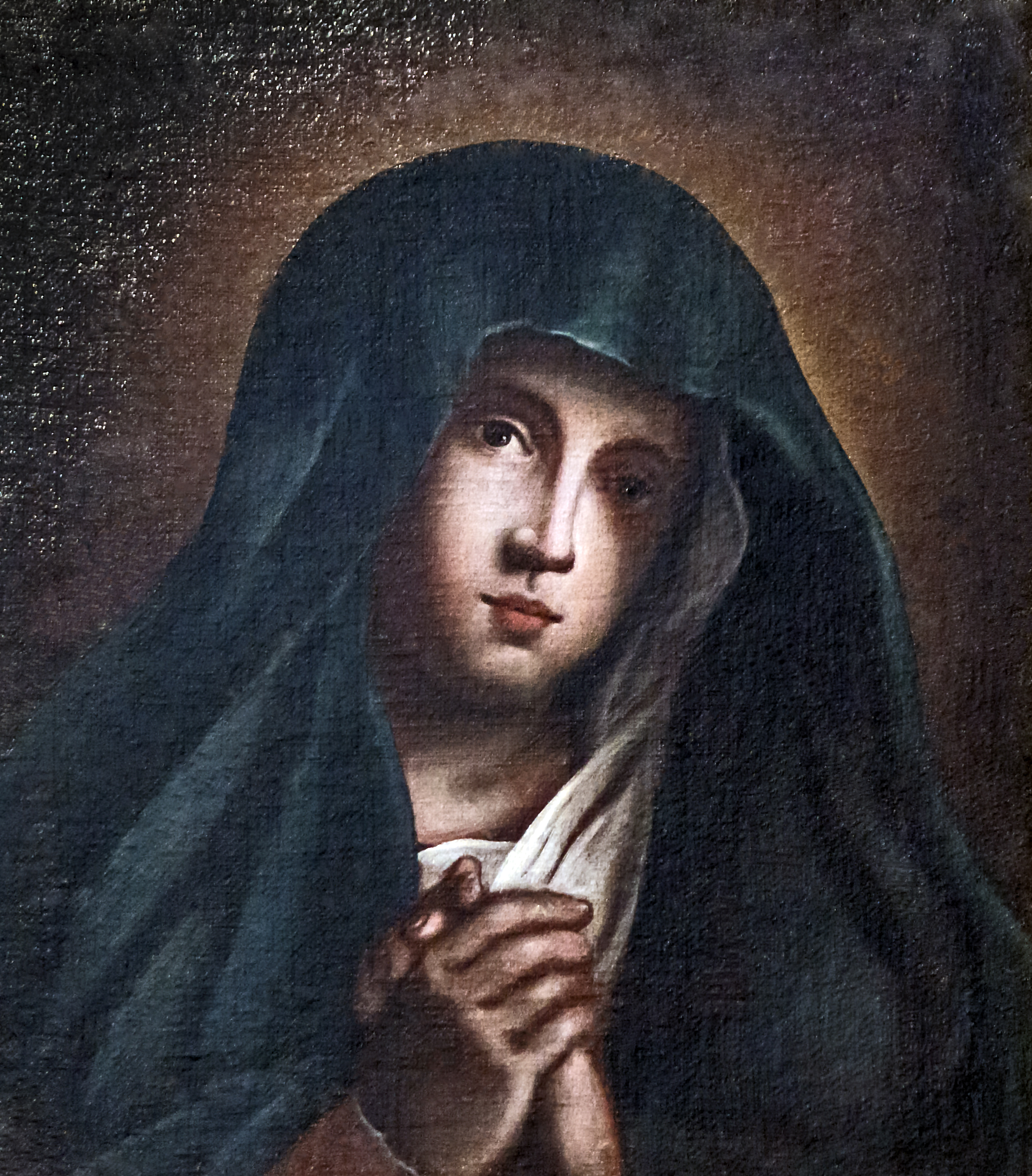
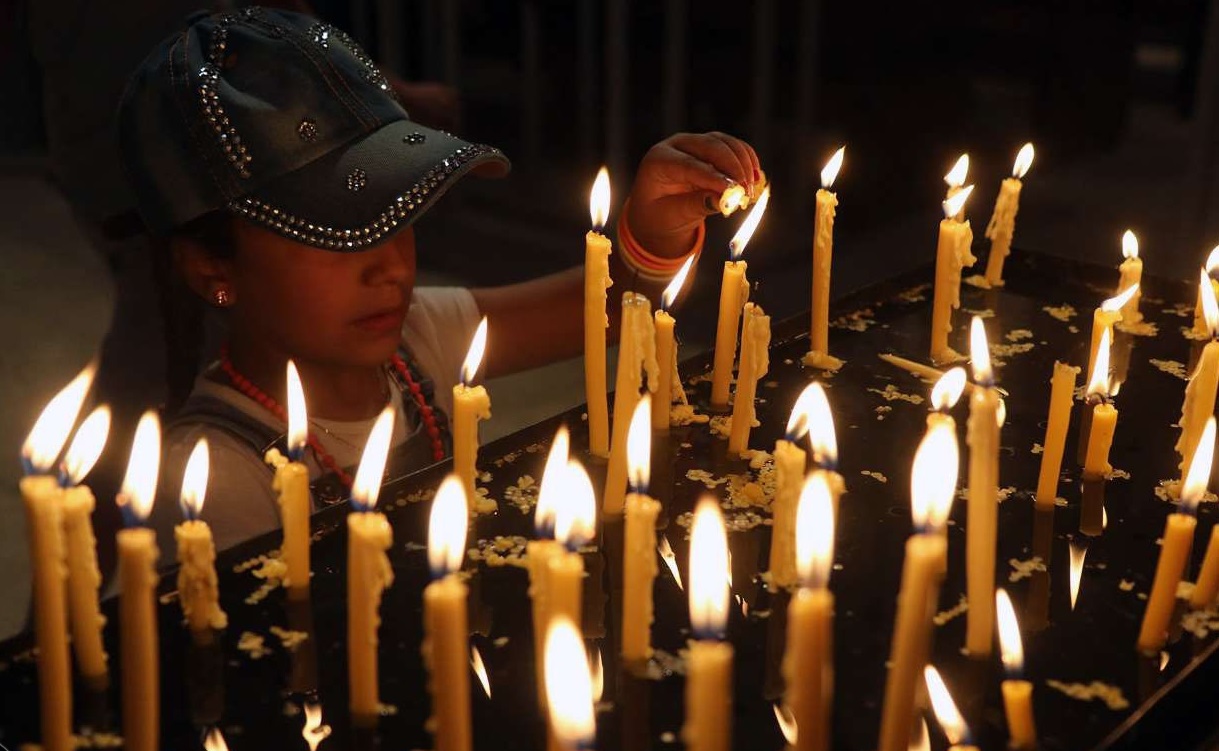
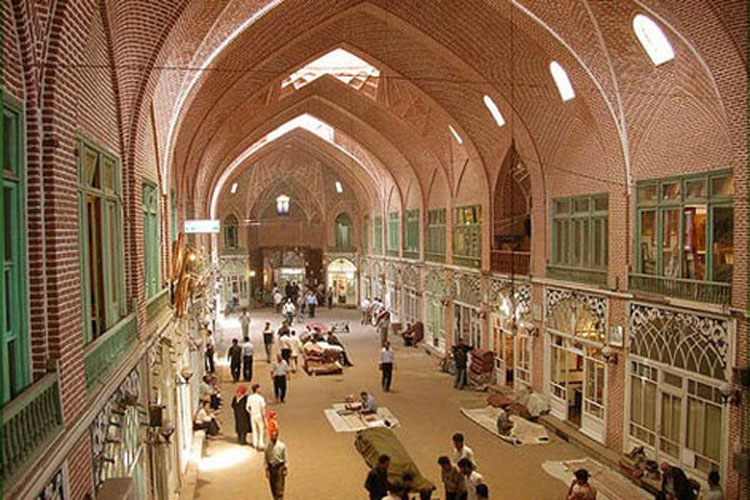 جاذبه : Tabriz Historic Bazaar
جاذبه : Tabriz Historic Bazaar
مشخصات جاذبه
جاذبه::Tabriz Historic Bazaar
نام کشور::Iran
نام شهر::Tabriz
نوع جاذبه ::Ancient and Historical
نوع جاذبه فرعی:: Historical
آدرس:: Tabriz Bazaar, City center, Tabriz, East Azerbaijan, Iran
زمان بازدید:: 00:00:00
تعطیلی هفته:: جمعه ها مغازه ها تعطیل است ولی میتوان در بازار چرخی زد.
تعطیلی سالیانه:: برخی تعطیلات رسمی مخصوصا وفات ائمه مطهر تعطیل می باشد.
توضیحات:: Tabriz has been a place of cultural exchange since antiquity and its historic bazaar complex is one of the most important commercial centres on the Silk Road. Tabriz Historic Bazaar Complex consists of a series of interconnected, covered, brick structures, buildings, and enclosed spaces for different functions. Tabriz and its Bazaar were already prosperous and famous in the 13th century, when the town, in the province of Eastern Azerbaijan, became the capital city of the Safavid kingdom. The city lost its status as capital in the 16th century, but remained important as a commercial hub until the end of the 18th century, with the expansion of Ottoman power. It is one of the most complete examples of the traditional commercial and cultural system of Iran. Outstanding Universal Value Brief synthesis Tabriz Historic Bazaar Complex, located along one of the most frequented east-west trade routes, consists of a series of interconnected, covered brick structures, buildings, and enclosed spaces for a variety of functions - commercial and trade-related activities, social gatherings, and educational and religious practices. Closely interwoven with the architectural fabric is the social and professional organization of the Bazaar, which has allowed it to function over the centuries and has made it into a single integrated entity.
کلیات
جاذبه::Tabriz Historic Bazaar
سازنده ::Various dynasties
ویژگی خاص:: It is the largest roofed and covered Bazaar in the world.
امکانات
Residence
Parking
Buffet
Restaurant
WC
پیشنهادات
جاذبه::Tabriz Historic Bazaar
بهترین زمان بازدید::13To 11:30
مدت زمان بازدید::2 ساعت الی نصف روز
آثار و نمونه های مشابه:: Bazaar of Isfahan, bazaar of Kashan, Vakil bazaar of Shiraz
بخش های مهم برای بازدید:: Timcheh Mozaffariyeh, Timcheh Amir and Amir Caravanserai, Gurjiler (Georgians), Haj Safar Ali, Mirza Shafi, Haj Rahim Sheikh Kazim, different rastas.
نزدیک ترین جاذبه گردشگری:: Jameh mosque of Tabriz, Constitution museum
پیشنهاد ویژه:: Timcheh Mozaffariyeh is only open between the hours 10 to 14
مسیر دسترسی
جاذبه::Tabriz Historic Bazaar
آدرس::Tabriz Bazaar, City center, Tabriz, East Azerbaijan, Iran
نحوه دسترسی::Tabriz Bazaar, City center, Tabriz, East Azerbaijan, Iran
عکس

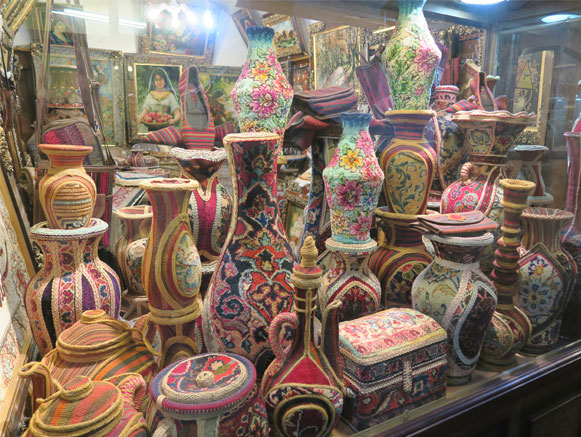
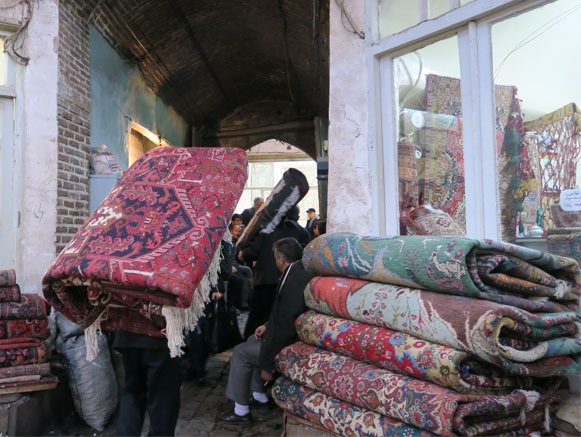
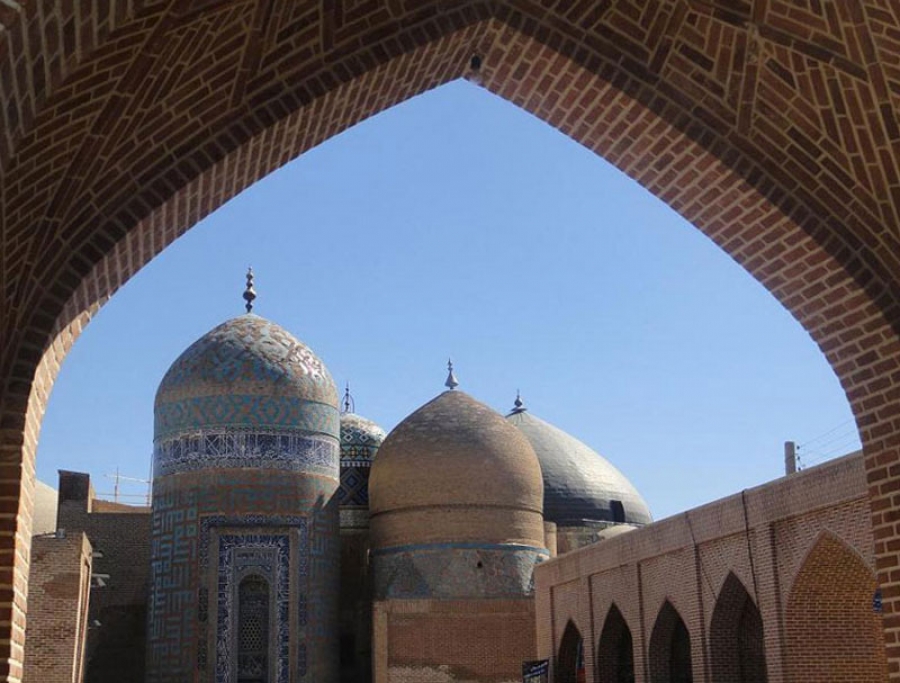 جاذبه : Sheikh Safiaddin Ardabili
جاذبه : Sheikh Safiaddin Ardabili
مشخصات جاذبه
جاذبه:: Sheikh Safiaddin Ardabili
نام کشور::Iran
نام شهر::Tehran
نوع جاذبه ::Ancient and Historical
نوع جاذبه فرعی:: Historical
زمان بازدید:: 08:00:00
تعطیلی هفته:: ندارد
تعطیلی سالیانه:: وفات پیامبر اسلام (ص) - تاسوعا و عاشورای حسینی و چند واقعه تاریخی مهم.
بلیط:: 5.500
بلیط خارجی:: 50.000
توضیحات:: The monument of Sheikh Safidin Ardabili is one of the historical and valuable places of Ardabil. This worthy and historic place was registered in the UNESCO world heritage list in 2010. By using traditional Iranian architecture and the use of maximum available space, this place was made and A variety of areas such as the library, mosque, school, tank, hospital, kitchen, bakery and several office were established in it.In addition to the monument of Sheikh Safi din Ardabili, shrine of shah Ismail 1 (The first Safavid king) is located in this complex, too. After the death of shah Ismail- The first king of the Safavid dynasty- his survivors decided to bury king’s body beside the grave of sheikh Safi din. Thus the first additional building into the tomb of sheikh was a small dome as shah Ismail’s grave, since then the monument of sheikh Safi gradually become the resting place of ancestors of Safavid kings.After a while, the monument was known as a place for publishing political and religious thinking. Such that the leaders of this dynasty were gathered in this complex and controlled the government affairs. That’s why this monument in the Safavid period was extended to 21 thousand meters with special attention to the kings of this period, and was decorated with great care and completion finally, as far as Safavian knew this monument as the paradise promised by God.
کلیات
جاذبه:: Sheikh Safiaddin Ardabili
وجه تسمیه::Named after the ancestor of the Safavid dynasty, Sheikh Safi-ad-din Ardabili .
سازنده ::Sadr al-Din Musa, the son of Sheikh Safi.
سبک معماری:: Iranian
بازسازی:: Qajar era
ویژگی خاص:: The coming together of dozens of equisite works in different artistic and architectural fields.
امکانات
WC
Restaurant
Buffet
Parking
Residence
پیشنهادات
جاذبه:: Sheikh Safiaddin Ardabili
بهترین زمان بازدید::According to visit days and hours.
مدت زمان بازدید::یک ساعت
بخش های مهم برای بازدید:: The entire complex
نزدیک ترین جاذبه گردشگری:: Ardabil museum of archeology
پیشنهاد ویژه:: Eating Halva from the halva shops of Sheikh Safi street, ( Sheikh Safi Halva Shop)
مسیر دسترسی
جاذبه:: Sheikh Safiaddin Ardabili
عکس

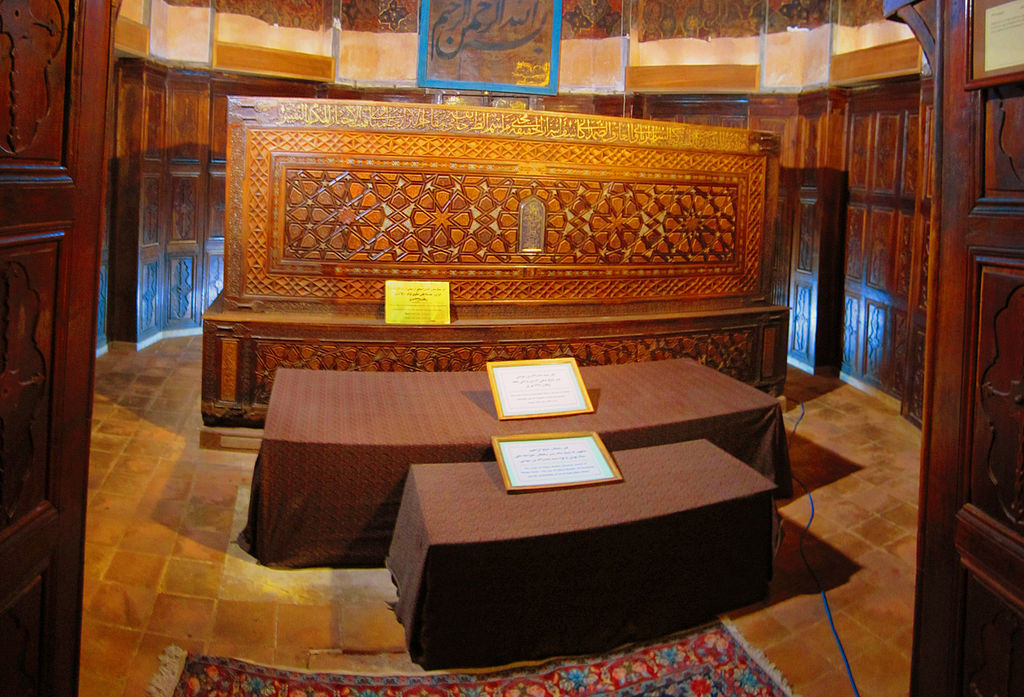

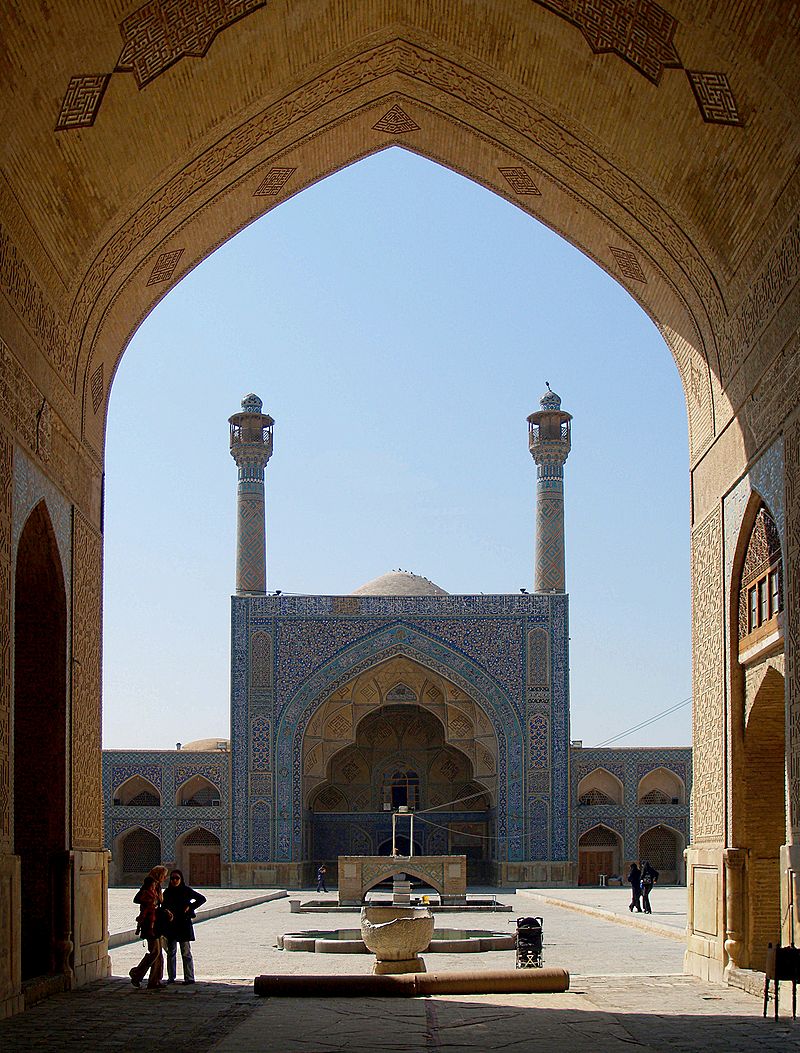 جاذبه : Jameh Mosque of Isfahan
جاذبه : Jameh Mosque of Isfahan
مشخصات جاذبه
جاذبه::Jameh Mosque of Isfahan
نام کشور::Iran
نام شهر::Isfahan
نوع جاذبه ::Ancient and Historical
نوع جاذبه فرعی:: Historical
آدرس:: Allame Majlesi street, Ghiam square, Isfahan, Iran
زمان بازدید:: 00:00:00
بلیط:: 50.000
بلیط خارجی:: 500.000
توضیحات:: The Jameh complex is a veritable museum of Islamic architecture while still functioning as a busy place of worship. Showcasing the best that nine centuries of artistic and religious endeavour has achieved, from the geometric elegance of the Seljuks to the more florid refinements of the Safavid era, a visit repays time spent examining the details – a finely carved column, delicate mosaics, perfect brickwork. Covering more than 20,000 sq metres, this is the biggest mosque in Iran. Religious activity on this site is believed to date back to the Sassanid Zoroastrians, with the first sizeable mosque being built over temple foundations by the Seljuks in the 11th century. The two large domes (north and south) have survived intact from this era but the rest of the mosque was destroyed by fire in the 12th century and rebuilt in 1121. Embellishments were added throughout the centuries. In the centre of the main courtyard, which is surrounded by four contrasting iwans, is an ablutions fountain designed to imitate the Kaaba at Mecca. Would-be pilgrims once used the fountain to practise the appropriate rituals prior to undertaking the hajj. The two-storey porches around the courtyard’s perimeter were constructed in the late 15th century.
کلیات
جاذبه::Jameh Mosque of Isfahan
سازنده ::There are different relics from throughout history in this mosque.
سبک معماری:: Razi style
ویژگی خاص:: Since 15 centuries of artistic and architectural creativities have been assembled here, this mosque has become one of the best of works , famous in today's world.
امکانات
Residence
Restaurant
Residence
Buffet
Restaurant
پیشنهادات
جاذبه::Jameh Mosque of Isfahan
نزدیک ترین جاذبه گردشگری:: Vernousfaderan graveyard
مسیر دسترسی
جاذبه::Jameh Mosque of Isfahan
آدرس::Allame Majlesi street, Ghiam square, Isfahan, Iran
تلفن:: ۳۴۴۵۶۴۰۰
عکس

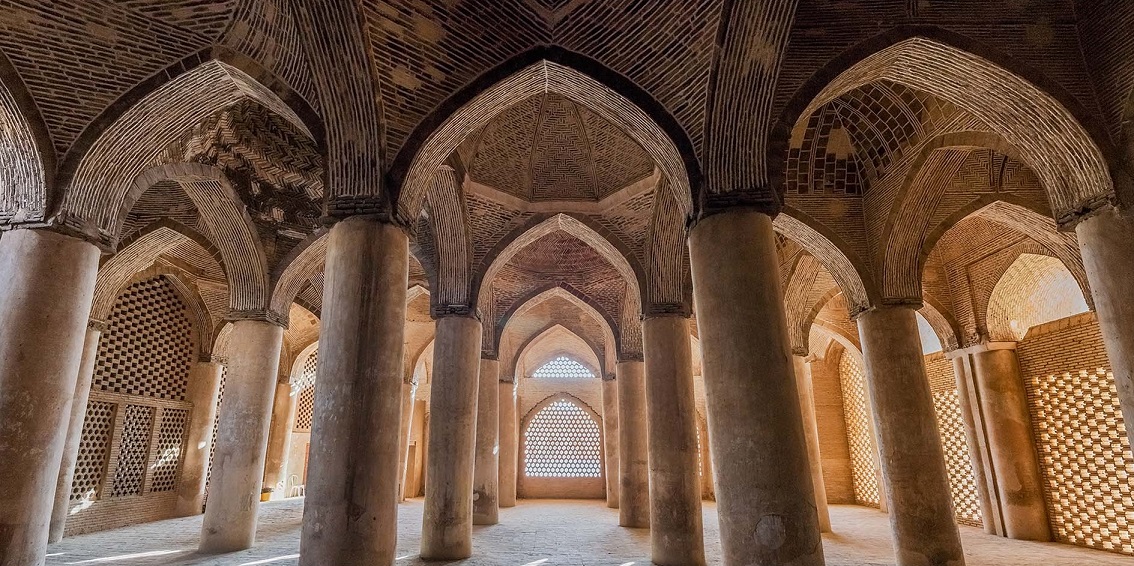
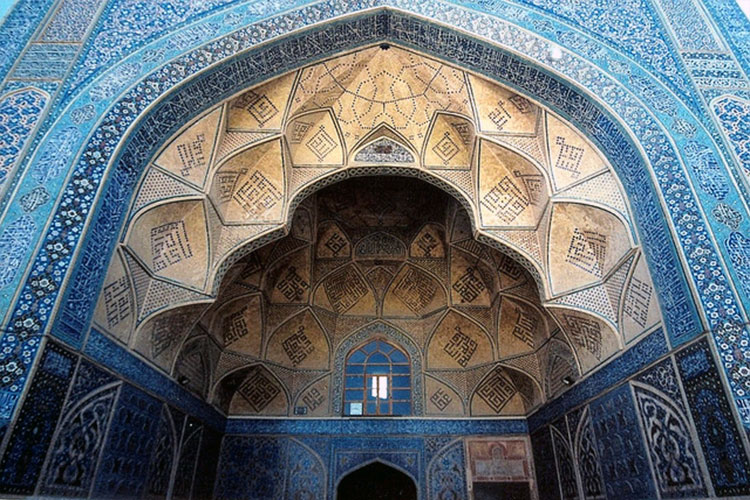
 جاذبه : Gonbad-e Qābus
جاذبه : Gonbad-e Qābus
مشخصات جاذبه
جاذبه::Gonbad-e Qābus
نام کشور::Iran
نام شهر::Golestan
نوع جاذبه ::Ancient and Historical
نوع جاذبه فرعی:: Historical
آدرس:: This monument is located in Golestan province, north of Gonbad-e Kavus city, and in 3 kilometers from the remains of the ancient city of Hyrcania in Mian park
زمان بازدید:: 00:00:00
بلیط:: 50.000
بلیط خارجی:: 500.000
توضیحات:: The 53 m high tomb built in ad 1006 for Qābus Ibn Voshmgir, Ziyarid ruler and literati, near the ruins of the ancient city of Jorjan in north-east Iran, bears testimony to the cultural exchange between Central Asian nomads and the ancient civilization of Iran. The tower is the only remaining evidence of Jorjan, a former centre of arts and science that was destroyed during the Mongols’ invasion in the 14th and 15th centuries. It is an outstanding and technologically innovative example of Islamic architecture that influenced sacral building in Iran, Anatolia and Central Asia. Built of unglazed fired bricks, the monument’s intricate geometric forms constitute a tapering cylinder with a diameter of 17–15.5 m, topped by a conical brick roof. It illustrates the development of mathematics and science in the Muslim world at the turn of the first millennium AD.
کلیات
جاذبه::Gonbad-e Qābus
سازنده ::This tower was constructed under orders from Qabus ibn Wushmagir
سبک معماری:: Razi style
بازسازی:: The tower has undergone several repairs during its lifetime and the last time was in 1970
ویژگی خاص:: World Heritage - Iran's tallest brick tower
امکانات
WC
پیشنهادات
جاذبه::Gonbad-e Qābus
بهترین زمان بازدید::Spring and Summer
مسیر دسترسی
جاذبه::Gonbad-e Qābus
آدرس::This monument is located in Golestan province, north of Gonbad-e Kavus city, and in 3 kilometers from the remains of the ancient city of Hyrcania in Mian park
تلفن:: ۳۳۲۹۴۳۵۲ (۰۱۷)
عکس







